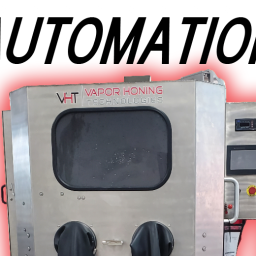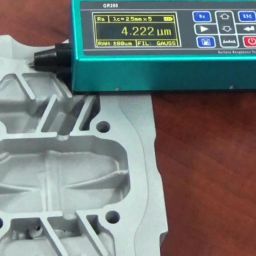Soda Blasting vs. Sandblasting: Which Is Better?
Soda blasting vs. sandblasting, which is best? Two key methods of washing or preparing a surface for industrial coatings are sandblasting and soda blasting.
Both of them are similar in terms of their equipment and processes. But, their materials and implementations make the difference. In some instances, you can use one, while in others, one has a definite advantage.
There are many questions to answer before selecting one method over the other. Identifying the function for each method can contribute to choosing the correct one for a project.
How does soda blasting compare to sandblasting? Get an in-depth overview and soda blasting vs. sandblasting comparison in this helpful article.
Sand Blasting
Sandblasting also known as abrasive blasting is both the older and most chosen option. The technique of use in sandblasting is to smooth and clean the solid surface by pushing fine particles across the surface of the object. That is done at high speeds using compressed air.
Sandblasting removes rust, dust, or residue before applying a suitable finish such as paint or powder coating.
The sandblasting device consists of four main elements. The air source, the sandblasting cabinet/room, the dust collector, and the blasting media. The air source for sandblasting is either a gas bottle or an air compressor.
The sandblasting cabinet/room holds the sandblasting object and the dust collector. The dust collector collects wastage or dust. Blast media are substances used in sandblasting, whether it is sand or not.
Other materials, such as glass or plastic balls and steel shot, have, in some instances, substituted sand in sandblasting. You can reuse several of these substances because they are much stronger than sand and are less susceptible to loss.
Sandblasting is a step up from hand sanding. It requires some equipment such as a blast cabinet, blast room, and an air compressor. The equipment used varies with the different projects.
Blasting Cabinets
You use a blasting cabinet when you need to sandblast smaller pieces that will fit inside the enclosure. Blast cabinets are suitable for recyclable content. That is because they absorb the medium once used to recycle the media for potential future work.
Blasting Rooms
At the end of the day, a blast room is a blasting cabinet on steroids. You use blast rooms for more significant pieces such as cars, heavy machinery, and planes. Dust and material management systems will also make it possible to cut down on wastage and recycled materials.
Air Compressors
Air compressors are pressurized and filled with gas or air. The compressors come in many different sizes and can either be stationary or portable. Stationary compressors are immovable compressors. And, it is obvious that portable air compressors move from site to site and used in an open area.
Knowing what kind of air compressor to use for sandblasting can be challenging.
For optimum performance, you should use a tank of 100 pounds per square inch. The higher the PSI, the quicker the sandblasting. Your pressure cleaning project will take four times as long if you decrease your blasting pressure by half.
For smaller sandblasting tasks, an air compressor that gives out between 20CFM – 30 CFM (cubic feet per minute) is ideal. At the same time, compressors with 30 CFM and 40 CFM range are the most suitable for more extensive work. Of course, for industrial type sandblasting work, you will need a compressor that produces between 50 and 100CFM.
When using the sandblasting air compressor, make sure that you read the manufacturer’s instructions and guidelines. For safety, it is a good idea to follow the exact directions on the manufacturer’s leaflet.
Soda Blasting
The soda blasting process is much the same as sandblasting. Soda blasting is a type of abrasive blasting, which uses the abrasive medium of sodium bicarbonate. The soda is forced to blast a surface using compressed air or water. The blasting media is the most significant difference.
Soda blasting, developed in the 1980s, is a milder blasting form than sandblasting. It uses the media of baking soda and uses equipment similar to sandblasting. Soda blasting’s primary function is to clean an object.
Soda blasting is very successful on surfaces such as plastic, chrome, and wood. In other words, surfaces that are lighter or need a softer contact to perform better with this form of a blast as they are less likely to harm the surface.
Soda blasting is efficient in automotive repair and cleaning wooden surfaces such as floors and doors. In addition, soda blasting is also used in the cleaning of masonry applications.
Sodium bicarbonate is also a deodorizing agent. That makes it suitable for the removal of mold and cleaning after fire damage. It is also a weaker material than those commonly used in sandblasting, which ensures that it breaks on contact and produces a lot of dust. Therefore, respiratory protection is vital.
Soda Blasting vs. Sandblasting
What is the distinction between sandblasting and soda blasting? It is the manner of the application in each technique. Also, the medium used. Let’s look at the pros and cons of each technique.
Pros of Soda Blasting
- Greener- This kind of blast is environmentally friendly; usually used with bicarbonate of soda
- Rust Blocker- It also is effective in the prevention of rust. That is because the powder film that remains after the soda blast prevents ‘flash rust’ and also removes the need for immediate coating
- Non-Abrasive- Soda bicarbonate is very mild, producing just 2.4 on the Mohs hardness scale. During the soda blast, the soda crystals erupt when they come into contact with the material. That reaction helps to cut the surface contaminant without affecting the material
- Non-toxic- It is also non-toxic by nature; sodium bicarbonate is a significant element of our body. Several larger authorities are supporting it because of its healthy and safe use
- Doesn’t Create Heat- Soda blast doesn’t produce any heat. That means it won’t distort or deform the object that is being handled.
Cons of Soda Blasting
- Alkaline Properties- Soda is a little alkaline. The media may damage surrounding plants and vegetation if it is not correctly washed off after treatment
- May Accumulate Inside Crevices- You need to pay careful attention when rinsing out the soda blasted object. You must make sure to rinse the nooks and crannies of the treated products before you apply the finish
- Surface profile- Metal parts undergo a refining procedure where the roughness of the metal’s surface is decreased. This is so as to adhere to the freshly added coating. Soda blasting is not capable of forming a surface profile due to its smooth finish
- Restricted Storage Time- You need to take extra caution when storing the soda blast media. Over time, soda will absorb moistures and form clumps. When this occurs, soda will not be able to pass through the blast container.
Pros of Sand Blasting
- Surface Profiling- Sometimes, during the processing of metal objects, the surface has to be profiled. That is so that the finished coating holds to the surface
- Abrasion Action- This action would clean the area, removing rust and other pollutants from the surface of the object being blasted
Cons of Sand Blasting
- Abrasive- Sandblasting eliminates surface pollutants by merely bombarding the surface. If the object being blasted isn’t handled correctly, it can easily damage it
- Contains Silica- Sand contains Silica, which can also pose significant health risks.
- That could lead to respiratory disorders, and so you must take special safety measures during the sandblasting
- Heat generating- The action of the sand particles against the object creates heat. Therefore extra safety precautions are needed to prevent excessive warping
- Activates Metal- The heat produced during treatment also triggers the iron and its elements that cause instant oxidation.
- High Efforts- Sandblasting requires a high amount of effort depending on the size of the sandblasted object.
When to Use Sand Blasting Over Soda
It is easier to use sandblasting when there is a more robust product involved. For example, when rust needs to be removed from steel, it is generally better to use a sandblasting method.
The media used in the process is more durable, which ensures it would be more effective at removing rust and paint from the heavy metal and cleaning the surface before applying the industrial coating, which helps the metals not to tarnish.
Heavy machinery benefits from sandblasting as it is better at removing oils and grease than soda blasting and any other contaminants. Sandblasting also has a broader range of media choices, meaning it has a more comprehensive selection of applications.
Sandblasting is widely used in the automotive industry. However many people are realizing the huge advantages of a vapor honing system which uses water mixed with the abrasives.
Sandblasting should be used where the project will benefit from a more robust media for more effective removal or cleaning. If there are concerns about environmental issues, recyclable media can be used where possible.
When to Use Soda Blasting over Sandblasting
Soda blasting, considering its softer media, has as many applications as sandblasting. Soda blasting is also better for surface cleaning. It also works best to eliminate weaker surface imperfections. In these cases, the power that comes with sandblasting can be a disadvantage.
Soda blasting works better in the automotive industry. That is because the sandblasting force could potentially break windows and damage softer rubberized materials. Some sandblasting media often interact with certain surfaces, such as aluminum and other metals, which do not work with soda blasting.
In general, soda blasting is more flexible and adaptive than sandblasting. It is less intense and can be used in a broader range of surfaces, despite sandblasting having a more comprehensive sandblasting media range. Sandblasting also does not have many good soda blasting properties, such as deodorization and cleansing properties.
Costs Involved
Between the two, the soda blast is marginally more expensive. That is predicted, given that many environmentally friendly choices do cost a little more. In certain situations, this could well be worth the investment based on the equipment’s efficiency and the result.
The starting materials for soda blasting include a blast cabinet, compressed air supply, a blast hose and nozzle, and a moisture purifying device, as well as sodium bicarbonate as a recurrent expense. In a wet soda blasting application you can reuse the soda blasting abrasive longer since its mixed in with the water. Dry soda blasting is a one and done process since the abrasive will break down and pickup surface contaminates as it removes them.
On the other hand, sandblasting requires an air compressor, a blasting pot or cabinet which costs less than soda blasting materials. Also, there is a possibility for reusable material when it comes to sandblasting, which is not the case with soda blasting.
The cost of sandblasting equipment often varies depending on the size of the projects for which it will be used. The portable sandblasting machine is much cheaper than large-scale industrial equipment.
Small scale soda blasting equipment can start from hundreds to thousands of dollars. That may be a manageable expense to some people, but the cost is far higher than finding a sandblasting machine for less. It could be worth investing more in this form of the device when considering the effects on the environment and health and safety.
Make Your Choice
The question was, soda blasting vs. sandblasting?
Although sandblasting and soda blasting are equivalent in several respects, there are considerably subtle differences that distinguish them. Both are also used in some of the same industries and in many respects, their positions are equal in terms of how valuable they are.
However, you cannot always use them in the same ways. Their usefulness depends mostly on the needs of a particular job. When using soda blasting instead of sandblasting (or vice versa); it can be harmful to the project.
Some soda blast and sandblasting elements are favored, but most of the time, one choice is obviously better. Deciding which materials, facilities, and media capacities are to be used, along with risks to the environment, health, and safety, must be considered. Understanding the difference between sandblasting and soda blasting will make a difference between a good or failed job.
Here is hoping that you are clearer on the differences and similarities of sandblasting vs. soda blasting. If you need any further information or help selecting machinery that fits your application or budget, contact us, and our professional and knowledgeable staff will be glad to help you.








